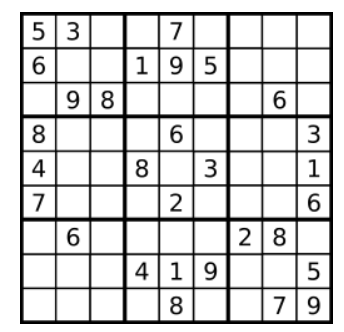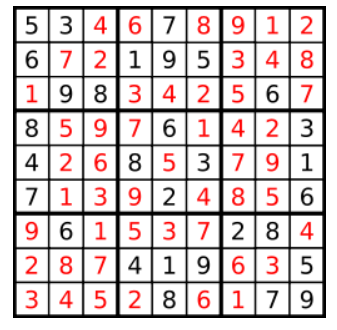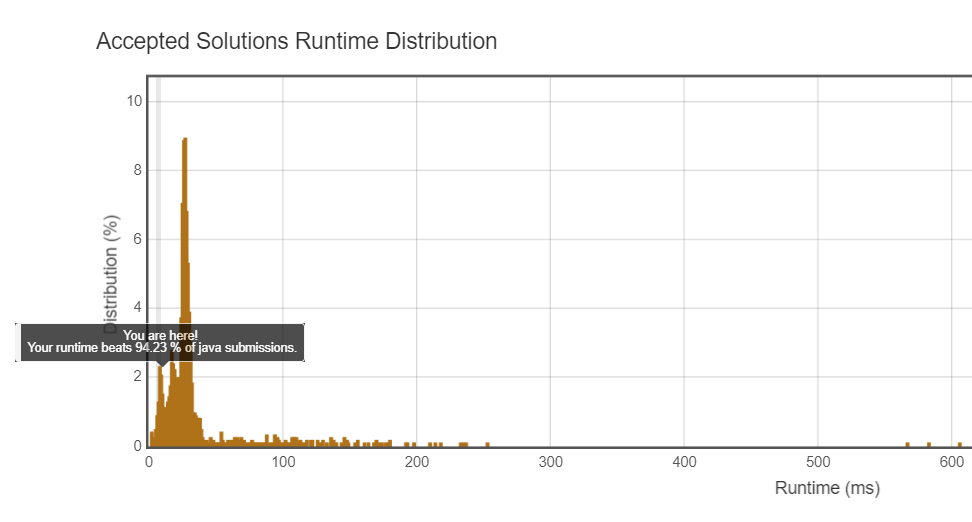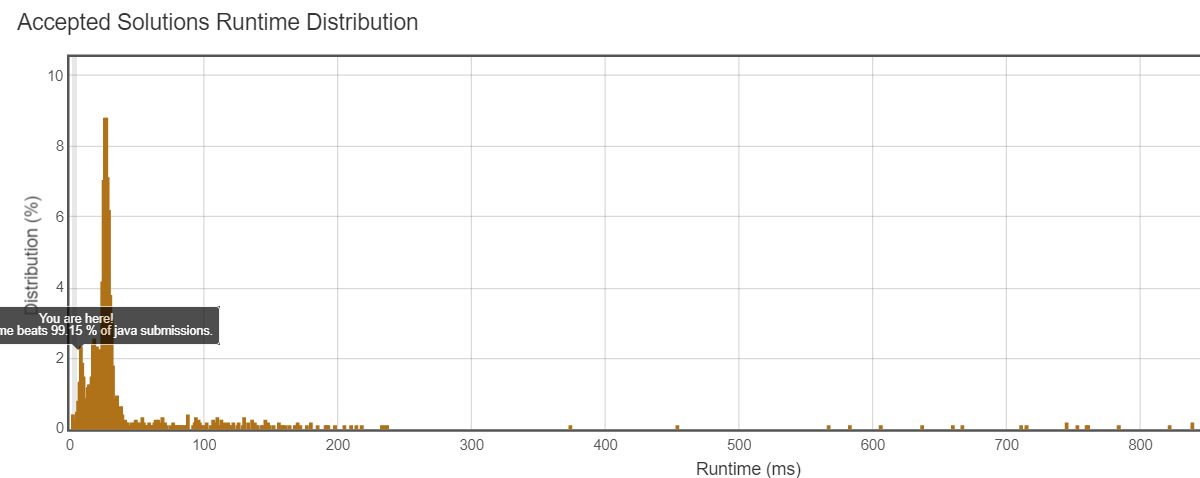1
2
3
4
5
6
7
8
9
10
11
12
13
14
15
16
17
18
19
20
21
22
23
24
25
26
27
28
29
30
31
32
33
34
35
36
37
38
39
40
41
42
43
44
45
46
47
48
49
50
51
52
53
54
55
56
57
58
59
60
61
62
63
64
65
66
67
68
69
70
71
72
73
74
75
76
77
78
79
80
81
82
83
84
85
86
87
88
89
90
91
| public class Solution {
public void solveSudoku(char[][] board) {
boolean[][] r_used = new boolean[9][9];
boolean[][] c_used = new boolean[9][9];
boolean[][][] b_used = new boolean[3][3][9];
List<int[]> ems = new ArrayList<>();
for ( int i = 0; i < 9; i++ ) {
for ( int j = 0; j < 9; j++ ) {
if ( board[i][j] == '.' ) {
int[] empty = {i, j, 0};
ems.add(empty);
} else {
int num = board[i][j] - 49;
myAdjuster( i, j, num, true, r_used, c_used, b_used );
}
}
}
int min_idx = findMin( ems, r_used, c_used, b_used );
mySolver ( board, ems, r_used, c_used, b_used, min_idx);
}
private boolean mySolver ( char[][] bd, List<int[]> ems, boolean[][] r_used, boolean[][] c_used, boolean[][][] b_used, int idx ) {
if ( idx == -1 ) return true;
int[] em = ems.get(idx);
ems.remove(em);
int i = em[0], j = em[1];
for ( int num = 0; num < 9; num++ ) {
if ( !r_used[i][num] && !c_used[j][num] && !b_used[i/3][j/3][num] ) {
myAdjuster( i, j, num, true, r_used, c_used, b_used );
int min_idx = findMin( ems, r_used, c_used, b_used );
if ( mySolver ( bd, ems, r_used, c_used, b_used, min_idx) ) {
bd[i][j] = (char)(num + 49);
return true;
}
myAdjuster( i, j, num, false, r_used, c_used, b_used );
}
}
ems.add(em);
return false;
}
private void myAdjuster( int i, int j, int num, boolean add, boolean[][] r_used, boolean[][] c_used, boolean[][][] b_used ) {
if (add) {
r_used[i][num] = true;
c_used[j][num] = true;
b_used[i/3][j/3][num] = true;
} else {
r_used[i][num] = false;
c_used[j][num] = false;
b_used[i/3][j/3][num] = false;
}
}
private int findMin( List<int[]> ems, boolean[][] r_used, boolean[][] c_used, boolean[][][] b_used ) {
for ( int[] em : ems ) {
int i = em[0], j = em[1];
em[2] = 0;
for ( int num = 0; num < 9; num++ ) {
if ( !r_used[i][num] && !c_used[j][num] && !b_used[i/3][j/3][num] )
em[2]++;
}
}
int min = 1000, idx = -1;
for ( int i = 0; i < ems.size(); i++ ) {
int[] em = ems.get(i);
if ( em[2] < min ) {
min = em[2];
idx = i;
}
}
return idx;
}
}
|



